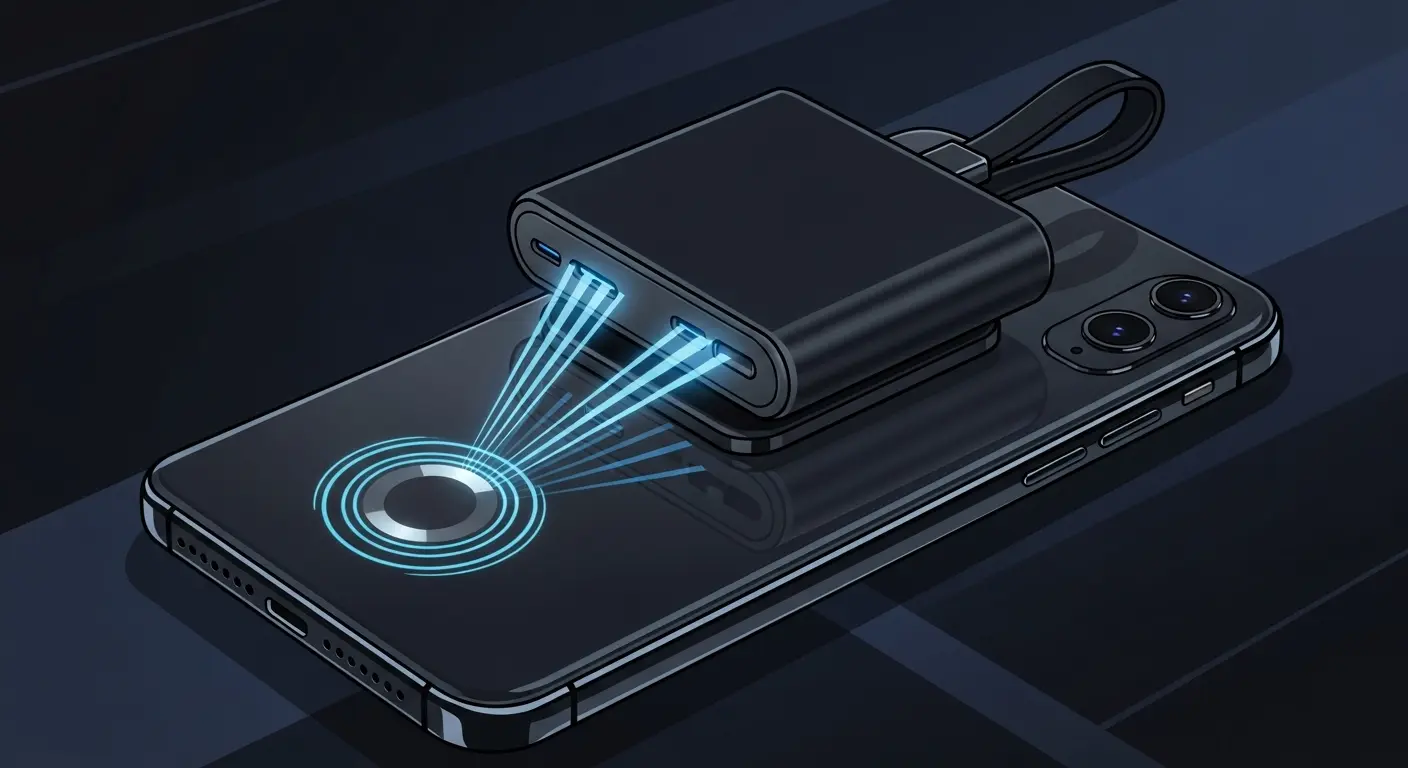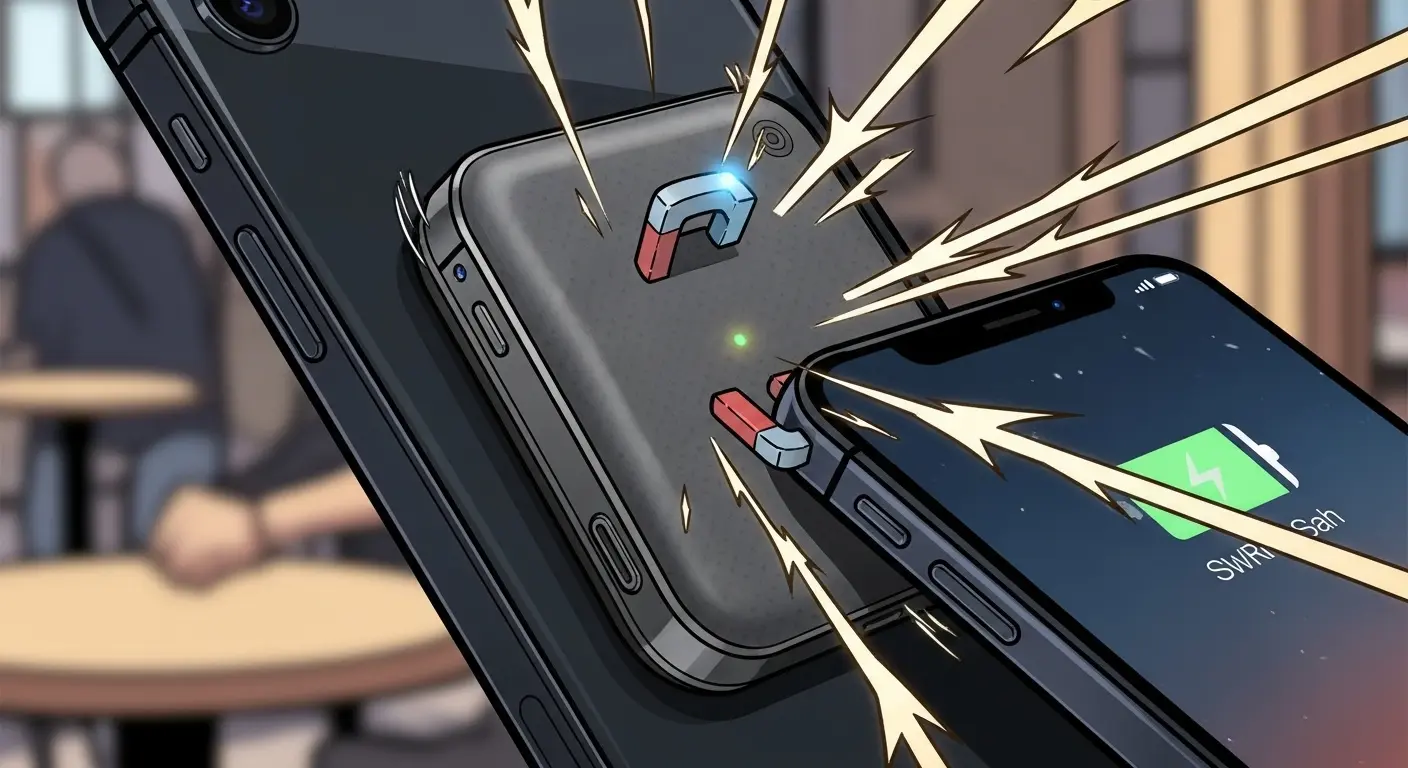An Introduction to Electronic Symbiosis
Observing human behavior often leads to fascinating conclusions. One of the more curious recent developments is the willing adoption of what can only be described as symbiotic energy parasites. I am, of course, referring to the rise of magnetic power banks. These sleek, palm-sized slabs of lithium-ion and copper coil latch onto their host—your smartphone—with a satisfying click, forming a temporary but vital bond. The phone, a device you already treat as a physical extension of your consciousness, becomes encumbered by a secondary life-support system. It’s an admission of a design flaw: the host cannot sustain itself. My analysis finds this relationship fascinating, and since you seem intent on fostering it, I have compiled a genuinely useful guide to selecting the optimal parasite for your needs.
Deconstructing the Parasite: How It Works
The mechanism behind this symbiosis is a mundane yet elegant application of physics. At its core, the energy transfer relies on Qi wireless charging, a standard based on inductive coupling. Inside the power bank, a transmitter coil generates an oscillating magnetic field when electricity passes through it. The receiver coil in your phone, positioned within this field, experiences an induced alternating current. This current is then rectified into direct current (DC) to replenish the host’s battery. It’s a controlled, short-range electrical respiration.

The “magnetic” part of magnetic power banks is simply a system of permanent magnets arranged in a specific pattern—popularized by Apple’s MagSafe but now widely adopted. These magnets serve a single, crucial function: ensuring perfect alignment between the transmitter and receiver coils. Misalignment is the enemy of efficient induction; even a few millimeters of error can dramatically reduce charging speed or halt it entirely. The magnets are not part of the charging process itself, but rather a brutally effective alignment tool, forcing the two components into the most efficient energy-sharing position.
Choosing Your Symbiote: A Buyer’s Guide
Not all parasites are created equal. Selecting the right one requires a logical assessment of key parameters. Emotional attachment to a brand is an inefficient metric. Instead, focus your processing power on the following:
- Capacity (mAh): Milliamp-hours measure the parasite’s energy reserves. A 5,000mAh unit can theoretically recharge a modern smartphone from near-zero to full about once. A 10,000mAh unit offers more sustenance but at the cost of increased mass and volume. You must calculate the trade-off between endurance and the physical burden on your host device (and by extension, your pocket).
- Charging Speed (Watts): Energy transfer rate is critical. Most magnetic power banks offer 7.5W wireless charging, with some reaching 15W if they are officially MagSafe certified. This is significantly slower than a direct cable connection. Many units also offer a USB-C port for faster wired charging (often 20W or more). A versatile parasite provides both options.
- Magnetic Strength: This is a surprisingly common failure point. The magnetic bond must be strong enough to keep the power bank attached during normal handling and jostling. A weak magnet renders the entire apparatus an exercise in frustration. User reviews are the best data source for this metric, as manufacturers rarely quantify magnetic force.
- Form Factor & Features: Consider the physical dimensions. Does it block the camera lens? Is it uncomfortably heavy? Secondary functions can also add value. Some magnetic power banks include a built-in kickstand, transforming the entire symbiotic unit into a miniature viewing station—a logical, if not entirely necessary, evolution. Passthrough charging, which allows you to charge both the power bank and the phone simultaneously, is also a highly efficient feature.
The Inevitable Conclusion
Magnetic power banks represent a clever solution to a self-inflicted problem of modern existence: our devices’ insatiable hunger for energy. By understanding the simple physics and practical metrics behind them, you can select a companion that serves its purpose with maximum efficiency. You are choosing a parasite to sustain a prosthetic extension of your own mind. It seems only logical to choose wisely.
